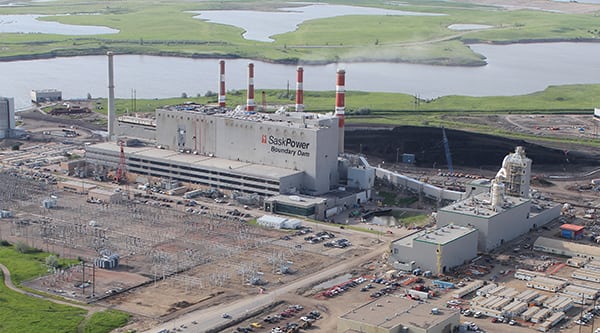Canada to Phase Out Coal Generation by 2030, Stricter Power Plant Rules on Horizon
Canada’s Ministry of Environment and Climate Change on November 21 announced regulatory actions to accelerate the phase-out of coal generation that lacks carbon capture and sequestration (CCS) across the country within the next few decades.
The measures announced by Minister of Environment and Climate Change Catherine McKenna are part of a larger transition from “traditional” coal power—units without CCS—to “clean energy” by 2030. By then, about 90% of the country’s power supplies will come from sources that don’t emit carbon dioxide, the ministry said in a statement.
“The accelerating phase-out of coal power will significantly improve the air quality and the health of Canadians,” it added.
The Last 7%
About 55% of Canada’s total power capacity was hydropower in 2014, according to the latest figures from the National Energy Board. Another 15% came from natural gas–fired plants, 10% from nuclear plants, 7% from coal and coke plants, 7% from wind, and the remainder, about 3%, from biomass, solar, and geothermal.
Coal plants are mostly clustered in Alberta, Saskatchewan, Nova Scotia, and New Brunswick. However, since Ontario retired all its coal-fired plants in 2014, Alberta—which produced 55% of its power from coal in 2014—has also announced plans to phase out coal power by 2030. Nova Scotia’s provincial government has an agreement with the federal government to reduce greenhouse gases from its coal plants, which produced about 60% of the province’s power in 2014. Meanwhile, New Brunswick’s only coal plant, the 450-MW Belledune Generating Station, is under a government mandate to close by 2043.
Canada has also led the global charge on CCS installations, installing the world’s first CCS facility at a large-scale coal-fired unit in 2014—the 110-MW Unit 3 at the Boundary Dam Power Station in Saskatchewan. The Canadian government projects that by 2040, nearly 1.3 GW of power plants could be equipped with CCS, mostly in Alberta and Saskatchewan.

Stricter Rules for Coal and Gas
Ottawa is also looking to roll out a federal climate plan this December. Canada ratified the Paris agreement this October, with more than 200 federal ministers of parliament voting in favor of the motion, while 81 opposed it. In October, meanwhile, Prime Minister Justin Trudeau announced that all provinces and territories will have until 2018 to adopt carbon pricing plans. He also proposed a “national floor price” for carbon of C$10 a tonne by 2018 that will rise by C$10 each year to C$50 a tonne by 2022.
Key measures to boost the transition also include stricter carbon rules for new coal-fired units and units older than 50 years. Under the 2012-finalized “Reduction of Carbon Dioxide Emissions from Coal-Fired Generation of Electricity Regulations,” these units are required to meet a stringent performance standard of 420 metric tons (t) of carbon dioxide per gigawatt-hour (tCO2/GWh) per calendar year by 2030.
But the Canadian government is also developing performance standards for natural gas–fired power plants, McKenna said on November 21. “The requirements will ensure that new natural gas–fired units are built using efficient technology and will set clear parameters around the use of boilers converted from coal to run on natural gas,” the ministry said in a backgrounder.
The rules will cover new and modified natural gas–fired combustion engines that sell or distribute more than 33% of their potential electricity output to the grid. “Annual performance standards for large combustion engines [more than 100 MW] would be set at 420 tCO2/GWh. A less stringent standard of 500 tCO2/GWh would be considered for smaller combustion engines (≤100 MW). Boiler units converted from coal to natural gas would have to meet a performance standard of 550 tCO2/GWh for a 15-year period or until 2045, whichever comes first. A standard of 420 tCO2/GWh would then apply,” it said.
On November 21, the Environment Ministry reiterated that federal regulations would stand down if provinces have a set of enforceable rules that deliver “an equivalent environmental outcome.”
The government also said it will back the transition away from coal generation by using the Canada Infrastructure Bank to finance projects such as “commercially viable clean energy” and “modern electricity systems” between provinces and territories.
—Sonal Patel, associate editor (@POWERmagazine, @sonalcpatel)